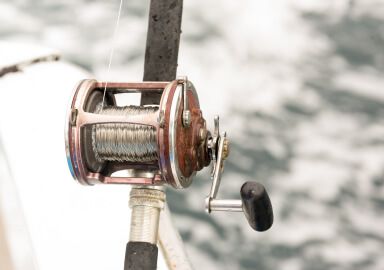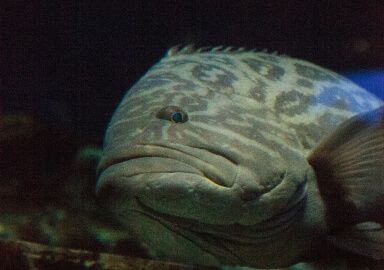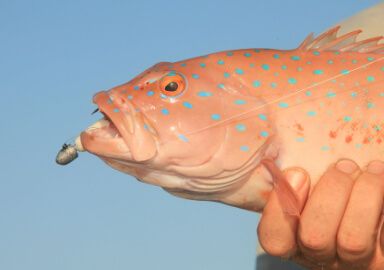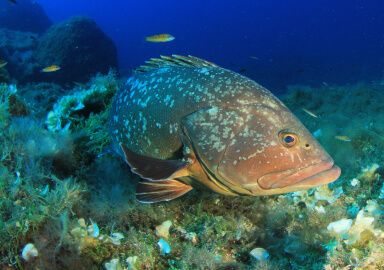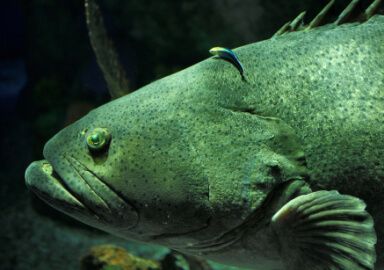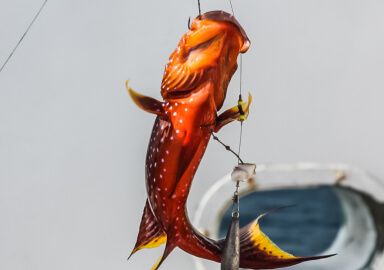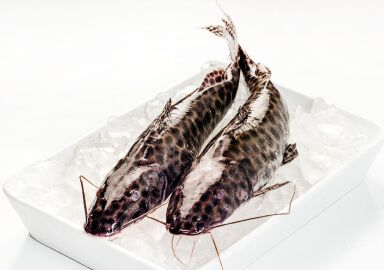Scamp Grouper
Tasty and skilled at stealing bait: scamp grouper are a popular medium sized, bottom-loving fish from south-eastern USA and the Gulf of Mexico.
View 2 listings
2
listings
–
price starting from
1
countries
–
to the nearest trip
Where and When?
Scamp are mostly a coastal species and limited to the shallowish waters off southern USA, from North Carolina southwards, through the Gulf of Mexico, as far as Belize. Within this area they can be locally abundant and a top sport target species despite their often smallish size. The species likes bottom structure such as natural reefs, rocks and gravel and rarely rises far from the substrate. Juvenile fish are usually found in estuaries, mangrove areas and bays but tend to move offshore as they grow. Their depth range is approximately 0-100 m. (0-328 ft.), but they are said to be the most common grouper on reefs at depths of 70-100 m. (230-330 ft.). Scamp can be caught throughout the year and most fishing is carried out in daylight with no clear “best times of the day”, particularly in deep waters. They are predated on by sharks and amberjack and probably stay close to structure as a predator avoidance measure.
About Scamp Grouper
The scamp grouper (Mycteroperca phenax), or just “scamp”, has a fairly robust, compressed, but somewhat elongate body, compared to some other groupers. Scamp have large mouths, with an overshot lower jaw with several sharp teeth around the margin. Their eyes are fairly small, suggesting little hunting after dark and the colour is very variable. Common colour variations include pale brown body with dark red spots on the flanks, same body, but with large “cat’s paw” type markings on the sides, a silvery head with markedly darker body and a pale brown front and much darker back. The maximum length is 107 cm. (42 in) with a mass of 14.2 kg. (31 lbs.), but most specimens caught are much smaller.
The species eats mostly benthic invertebrates, but also small fish. In the northern parts they spawn from February to July, usually in fairly shallow water above reefs. While mostly a solitary species, scamp briefly form shoals of a few dozen fish during spawning and in cool times there is a general movement from deeper to shallower waters.
How to Catch?
Apart from juveniles in estuaries and close inshore, most scamp are caught offshore from small and medium sized boats. Many anglers prefer to anchor while others find drifting slowly above suitable substrate is best. Light to medium spinning tackle is used and the terminal tackle can be baits or lures depending on conditions and preferences. Some anglers prefer lighter tackle, to feel the bite and hook the fish, but the fish, when hooked, must be kept from reaching problematic structure. They might even have earned their name - “scamp” - because of their skill at “stealing” baits without getting hooked.
Many types of bait, both natural and artificial, can work with individual anglers usually preferring either natural bait or artificial lures. All anglers agree, however, that the best fishing is close to the substrate with the bait or lure being moved slowly. Dead baits, such as squid that tends to stay on the hook at depths, work well, but many anglers prefer live bait. Live cigar minnows have a good reputation, but any smallish local fish may work. Some anglers like using the “Carolina rig” while others use two hook rigs where one hook has natural bait and the other a plastic. Scamp are a very popular fish; they can be abundant, reasonably easily found and caught and, on top of this, they are said to be one of the tastiest fish species.




